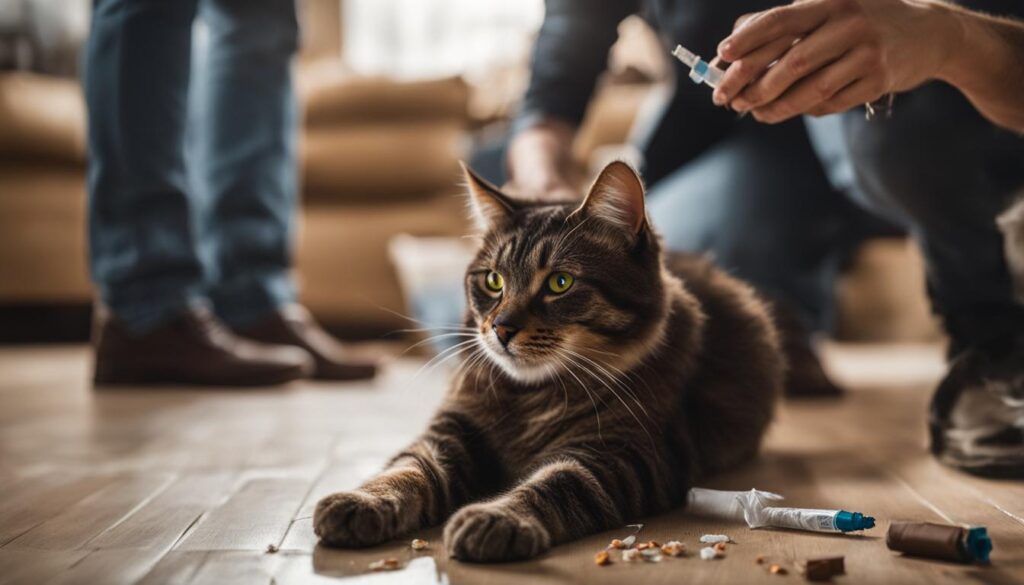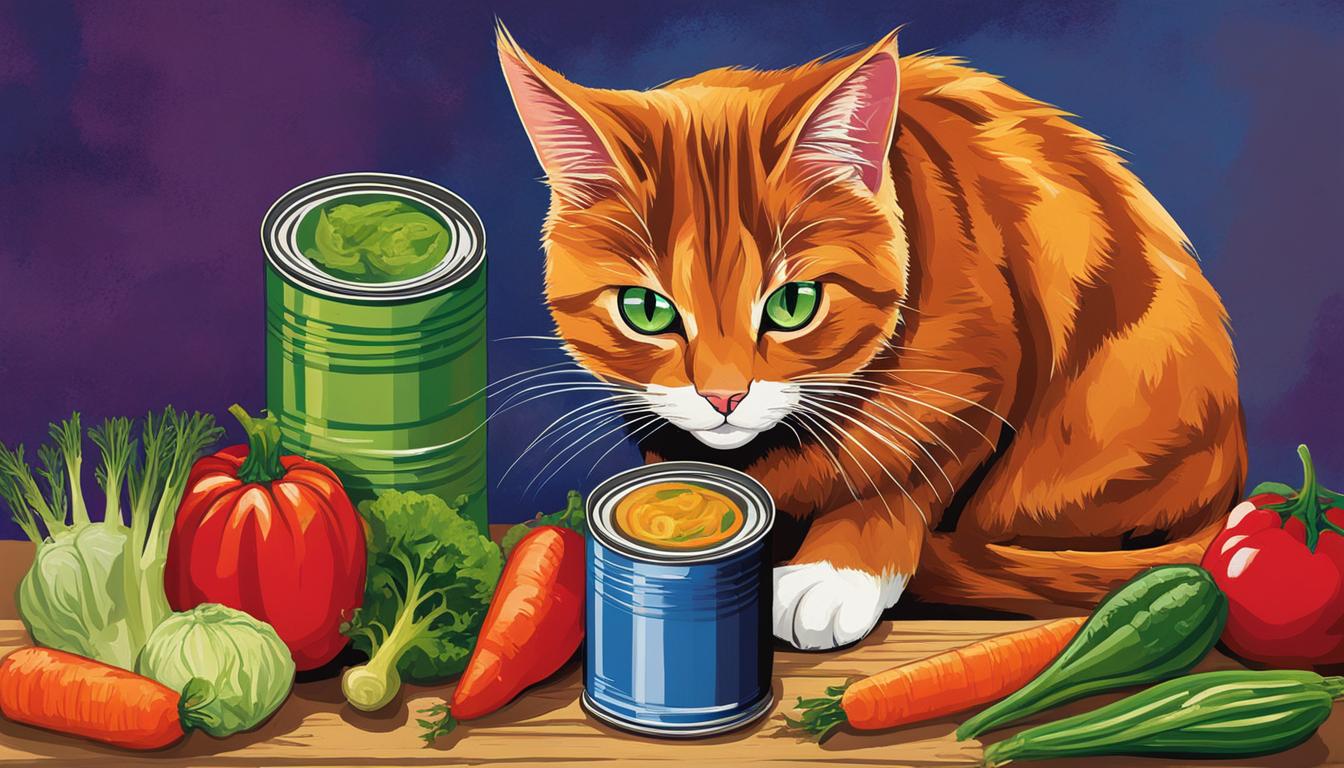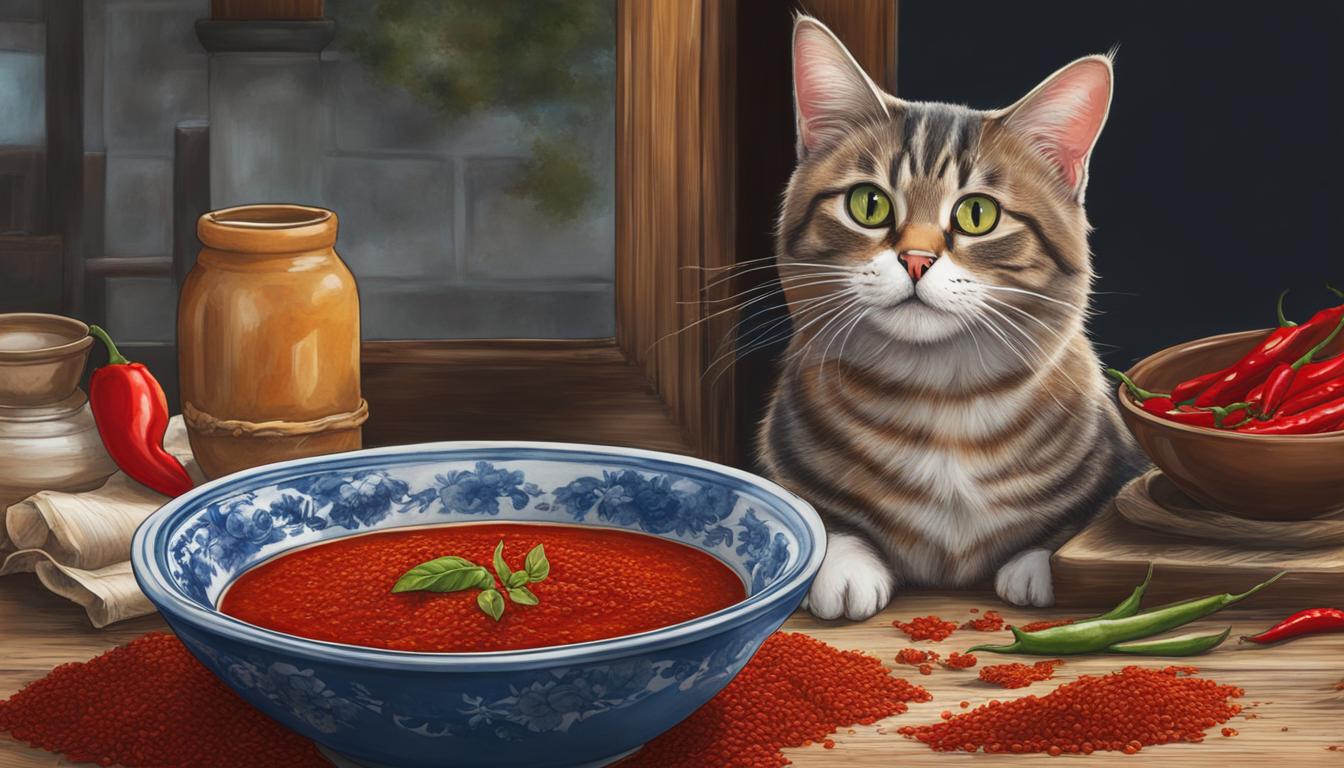As a curious cat owner, I’ve often wondered if feeding my feline friend a little nibble of chocolate would be harmless or perhaps even enjoyable for them. However, after delving into the topic and consulting with experts, I quickly learned that chocolate and cats are definitely not a match made in kitty heaven.
It turns out that chocolate is toxic to cats due to the presence of an alkaloid called theobromine, which cats cannot naturally metabolize. This means that even a small amount of chocolate can lead to toxic build-up in their bodies, potentially causing severe reactions and even liver failure. To make matters worse, chocolate also contains caffeine, a stimulant that can further wreak havoc on our feline friends’ delicate systems.
If you’re wondering why a seemingly harmless treat like chocolate can be so dangerous for cats, it all comes down to their unique biology. Unlike humans and some other animals, cats lack certain enzymes needed to break down and eliminate theobromine. As a result, this compound can accumulate in their system and lead to a range of alarming symptoms.
It’s important to note that not all chocolates are created equal when it comes to their toxicity levels for cats. Darker chocolate and baking chocolate pose the highest risk, as they tend to have higher theobromine concentrations. So, even if your mischievous feline manages to snatch a small piece of chocolate, it’s crucial to take immediate action and seek veterinary care to prevent any potential harm.
While it might be tempting to share a sweet treat with your beloved furball, it’s best to steer clear of chocolate altogether. Instead, focus on finding cat-friendly alternatives that offer a range of health benefits and cater to their taste buds. After all, showering them with love, attention, and specially formulated treats is just as rewarding for both of you.
Key Takeaways:
- Chocolate is toxic to cats due to the presence of theobromine and caffeine.
- Theobromine can cause toxic build-up and potentially lead to liver failure in cats.
- Dark chocolate and baking chocolate pose the highest risk for cats due to their higher theobromine concentrations.
- Even a small amount of chocolate can have severe effects on a cat’s health and well-being.
- Opt for cat-friendly treats to keep your feline friend happy and healthy.
What to Do if Your Cat Eats Chocolate
If you suspect that your cat has eaten chocolate, it is crucial to contact a veterinarian immediately. Time is of the essence when it comes to chocolate ingestion in cats, as theobromine and caffeine, the toxic compounds in chocolate, can quickly lead to severe symptoms. Call your vet and provide as much information as possible about the type and quantity of chocolate consumed. They will guide you on the next steps for emergency care.
In most cases, the veterinarian will recommend inducing vomiting to remove the chocolate from your cat’s system. This may involve using a vomit-inducing medication or giving hydrogen peroxide under their guidance. It is essential to follow your vet’s instructions precisely, as improper administration of these methods can lead to further complications. The vet may also recommend bringing your cat in for a physical exam, urine sample, or an ECG to assess their condition and determine the best course of action.
In some instances, the vet may need to keep your cat hospitalized for observation and administer fluid therapy to flush out the toxins. The severity of chocolate poisoning varies depending on the amount and type of chocolate consumed, as well as the size of your cat. Immediate veterinary care is crucial to prevent further complications and potentially save your cat’s life. Remember, never attempt to treat chocolate ingestion in cats at home without professional guidance.

Symptoms of Chocolate Poisoning in Cats
When it comes to chocolate, cats are at risk of poisoning due to their inability to metabolize theobromine and caffeine. If your feline friend ingests chocolate, it’s important to be aware of the symptoms of chocolate poisoning. These symptoms typically manifest within 6-12 hours after ingestion and can last up to 3 days.
Common signs that your cat may have consumed chocolate include vomiting, diarrhea, decreased appetite, increased thirst and urination, elevated heart rate, restlessness, panting, muscle tremors, seizures, and even coma. The severity of these symptoms depends on the amount and type of chocolate ingested, as well as the size of your cat.
It’s crucial to note that the darker the chocolate, the higher the risk of toxicity. Baking chocolate and dark chocolates pose the greatest threat to cats due to their high theobromine content. In severe cases, chocolate poisoning can lead to life-threatening complications such as muscle spasms, dangerously high body temperatures, and even liver failure.
Symptoms of Chocolate Poisoning in Cats:
- Vomiting
- Diarrhea
- Decreased appetite
- Increased thirst and urination
- Elevated heart rate
- Restlessness
- Panting
- Muscle tremors
- Seizures
- Coma
If you notice any of these symptoms or suspect that your cat has ingested chocolate, it is crucial to seek immediate veterinary care. Prompt treatment can help alleviate symptoms, prevent further complications, and potentially save your cat’s life.
Table: Types of Chocolate and Their Toxicity Levels
| Type of Chocolate | Cat’s Weight | Toxicity Level |
|---|---|---|
| Milk Chocolate | 10 pounds | Significant risk |
| Semi-Sweet Chocolate | 10 pounds | High risk |
| Baking Chocolate | 10 pounds | Extreme risk |
| Cocoa Beans | 10 pounds | Lethal |
Remember, prevention is key. Keep all forms of chocolate out of reach of your feline companion, and instead, opt for cat-friendly treats that are safe and enjoyable for their health.
How Much Chocolate is Toxic for Cats
When it comes to chocolate, even a small amount can be harmful to cats. The level of toxicity depends on the cat’s weight and the type of chocolate consumed. As a general rule, cats should not be fed any chocolate at all. However, darker chocolates and baking chocolates pose a higher risk due to their higher theobromine concentrations. Even one square of unsweetened baking chocolate can be equally as toxic as 23 chocolate kisses for a 10-pound cat.
To give you a better idea of the potential danger, let’s take a look at the toxicity levels of different types of chocolate:
| Type of Chocolate | Amount that can be toxic for a 10-pound cat |
|---|---|
| Milk Chocolate | 1 ounce |
| Semi-Sweet Chocolate | 0.3 ounces |
| Baking Chocolate | 0.1 ounces |
| Cocoa Beans | Less than 0.5 ounces |
As you can see, even a small amount of certain types of chocolate can be deadly for cats. It’s crucial to keep chocolate and any products containing chocolate out of your cat’s reach to prevent accidental ingestion and potential health consequences.

Protecting Your Cat from Chocolate
To protect your cat from the dangers of chocolate, it’s important to be vigilant and take preventive measures. Here are a few tips:
- Store chocolate and chocolate products in secure, elevated locations that are inaccessible to your cat.
- Inform family members and visitors about the risks of feeding chocolate to cats and the importance of keeping it away from them.
- When baking or cooking with chocolate, ensure that all utensils and surfaces are thoroughly cleaned to prevent your cat from ingesting any chocolate residue.
Remember, prevention is key when it comes to protecting your cat’s health. By keeping chocolate away from your furry friend, you can help ensure their well-being and avoid the risks associated with chocolate consumption.
Cat-Friendly Chocolate Alternatives
While chocolate is a delicious treat for humans, it is important to remember that it can be highly toxic to cats. So, can kittens eat chocolate? Absolutely not! Even small amounts of chocolate can have severe consequences for our feline friends. But don’t worry, there are plenty of cat-friendly alternatives to satisfy their cravings and keep them safe.
One great option is to choose specially formulated cat treats that mimic the taste and texture of chocolate. These treats are often made with ingredients that are safe for cats to consume, such as carob, a chocolate substitute that is non-toxic to cats. Carob treats provide a similar flavor experience without the harmful effects of chocolate. Plus, they come in a variety of shapes and sizes, making them visually appealing to cats.
Another alternative is to make homemade cat treats using cat-safe ingredients. You can find countless recipes online that use ingredients like canned tuna or chicken, baby food, or even pureed fruits and vegetables. These treats are not only safe for cats, but they also offer nutritional benefits. Just be sure to avoid using any ingredients that are toxic to cats, such as onions, garlic, or certain types of nuts.
| Benefits of Cat-Friendly Chocolate Alternatives | Ingredients |
|---|---|
| Safe for cats | Carob, cat-safe ingredients |
| Provides a similar flavor experience | Tuna, chicken, baby food, pureed fruits and vegetables |
| Offers nutritional benefits | Cat-safe ingredients |
“Cat-friendly chocolate alternatives are not only a safe option for our feline friends, but they also provide a delightful flavor experience. Plus, they give us the opportunity to get creative and show our cats some extra love through homemade treats.”
Remember, treating your cat with love, attention, and safe alternatives is just as rewarding as any chocolatey delight. By choosing cat-friendly chocolate alternatives, you can ensure that your furry companion stays happy, healthy, and away from any potential dangers.

Chocolate Toxicity in Cats: A Serious Matter
As a cat owner, it’s important to understand the serious consequences of chocolate consumption for our feline friends. Theobromine and caffeine, two compounds found in chocolate, can have toxic effects on cats and can lead to severe reactions, including liver failure. If you suspect that your cat has ingested chocolate, it’s crucial to seek immediate veterinary care to ensure proper diagnosis and treatment.
When it comes to treating chocolate toxicity in cats, there are several options available. Inducing vomiting may be necessary to remove any remaining chocolate from the cat’s system. Vomit-inducing medications can also be administered under veterinary supervision. In more severe cases, fluid therapy may be required to flush out the toxins and support the cat’s overall health.
To better understand the impact of chocolate on cats, it’s essential to recognize the symptoms of chocolate poisoning. These may include vomiting, diarrhea, increased heart rate, muscle tremors, and even seizures. The severity of symptoms can vary depending on the amount and type of chocolate ingested, as well as the cat’s size. Prompt veterinary care is critical to alleviate symptoms and prevent further complications.
| Type of Chocolate | Amount Toxic to Cats |
|---|---|
| Milk Chocolate | Approximately 1 ounce per 2 pounds of body weight |
| Semi-Sweet/Dark Chocolate | Approximately 1 ounce per 4 pounds of body weight |
| Baking Chocolate | Approximately 1 ounce per 9 pounds of body weight |
“Chocolate toxicity in cats is a serious matter that requires immediate attention and veterinary care.”
It’s important to note that prevention is key when it comes to chocolate toxicity in cats. Store chocolate and chocolate-containing products in a secure location, out of your cat’s reach. Be mindful of the different types of chocolate and their varying levels of toxicity. Instead of indulging our furry friends with chocolate treats, there are plenty of cat-friendly alternatives available that provide both enjoyment and health benefits.

Remember, chocolate is for humans, not for cats. By understanding the risks and taking preventive measures, we can keep our feline companions safe and happy.
Conclusion
Well, it’s clear that cats and chocolate don’t mix. The toxic effects of chocolate on cats are no laughing matter. From theobromine to caffeine, these substances spell trouble for our feline friends. Even small amounts of chocolate can have serious consequences, ranging from increased heart rate to seizures.
If, heaven forbid, your cat does get their paws on some chocolate, don’t waste a second – seek immediate veterinary care. Cat chocolate toxicity treatment may involve inducing vomiting, administering vomit-inducing medication, or providing fluid therapy. Remember, time is of the essence.
But fear not! There are plenty of cat-friendly chocolate alternatives out there. Treat your furry companion to specially formulated goodies that offer health benefits and cater to their discerning taste buds. And remember, the best treat you can give your cat is your love and attention.
So, let’s keep the chocolate cravings to ourselves and keep our cats safe. With the right knowledge and care, we can ensure our feline friends lead happy and healthy lives, free from the dangers of chocolate.
FAQ
Can cats eat chocolate?
No, cats should never be given chocolate as it is toxic to them.
What should I do if my cat eats chocolate?
If you suspect your cat has consumed chocolate, contact a veterinarian immediately for proper diagnosis and treatment.
What are the symptoms of chocolate poisoning in cats?
Symptoms of chocolate poisoning in cats can include vomiting, diarrhea, increased heart rate, muscle tremors, and seizures.
How much chocolate is toxic for cats?
Even small amounts of chocolate can be harmful to cats, with darker chocolates and baking chocolates posing the highest risk.
Are there cat-friendly alternatives to chocolate?
Yes, it is recommended to find cat-friendly treats that offer health benefits and appeal to their tastes and smell.
Is chocolate toxicity in cats a serious matter?
Yes, chocolate toxicity in cats can lead to severe reactions, liver failure, and even death, requiring immediate veterinary care.





